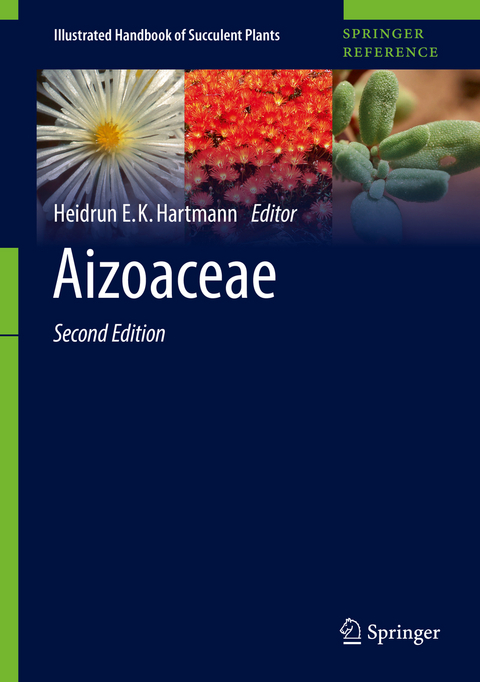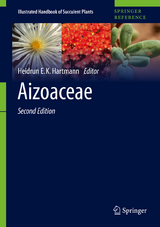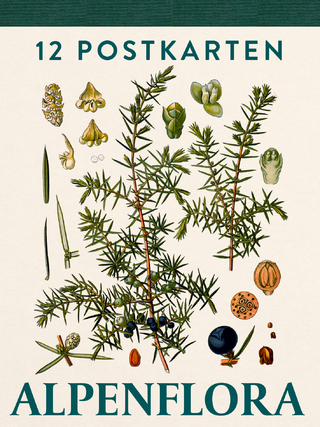Aizoaceae
Springer Berlin
978-3-662-49258-1 (ISBN)
About 15 years after the first edition of the Handbook of Aizoaceae, a wealth of changes can be reported for the family Aizoaceae, and this second edition brings a completely new survey over all taxonomic units from subfamilies down to species and subspecies; each critically examined. Of the presently known 2956 species, 1594 have been accepted and are described here, arranged in 147 genera. Six genera have been newly described since 2001, namely Brianhuntleya, Hammeria, Knersia, Phiambolia, Ruschiella, and Volkeranthus, and only one has been placed newly into synonymy (Caulipsilon). All synonymous genus names are treated with the valid genus names. Preliminary molecular studies are referred to, for which different groups of markers at different levels like species, genera, subgenera, and further ranks have been used. The basic division into four subfamilies is supported by more recent studies, yet with some genera being shifted. Furthermore, the geographical distribution of each genus is shown on one map each: either worldwide, or restricted to Southern Africa. For these latter, the main rainfall seasons are delimited by blue lines in order to offer also parameters for cultivation.
This second edition provides a comprehensive list of the latest taxonomy including the updated relevant plant data. Following an introduction to the leaf-succulent family Aizoaceae, including keys to the subfamilies and genera, all genera with keys to the subgenera and succulent species are described in detail.
Dr. Heidrun (Heidi) E.K. Hartmann has worked as senior lecturer in the rank of a professor at the University of Hamburg, Germany, teaching and researching in the fields of General Botany, especially Systematics of plants, from 1970 until 2007. She published well over 120 books and articles, mainly on the ecology and taxonomy of the Aizoaceae, based on her thorough knowledge of this plant family, derived from extensive field work in Africa, where she spent 4 to 12 weeks every year between 1968 and 2014.
Acrodon .- Acrosanthes.- Aethephyllum.- Aizoanthemum.- Aizoon.- Aloinopsis.-Amphibolia.- Antegibbaeum.- Antimima.- Apatesia.- Arenifera.- Argyroderma.- Aridaria.-Aspazoma.- Astridia.- Bergeranthus.- Bijlia.- Braunsia.- Brianhuntleya.- Brownanthus.-Calamophyllum.- Callistigma.- Carpanthea.- Carpobrotus.- Carruanthus.- Caryotophora.-Cephalophyllum.- Cerochlamys.- Chasmatophyllum.- Cheiridopsis.- Circandra.- Cleretum.-Conicosia.- Conophytum.- Corpuscularia.- Cryophytum.- Cylindrophyllum.- Cypselea.-Dactylopsis.- Deilanthe.- Delosperma.- Dicrocaulon.- Didymaotus.- Dintheranthus.-Diplosoma.- Disphyma.- Dorotheanthus.- Dracophilus.- Drosanthemum.- Eberlanzia.-Ebracteola.- Ectotropis.- Enarganthe.- Erepsia.- Esterhuysenia.- Eurystigma.- Faucaria.-Fenestraria.- Frithia.- Galenia.- Glottiphyllum.- Gunniopsis.- Hallianthus.- Hammeria.-Hartmanthus.- Hereroa.- Hymenogyne.- Ihlenfeldtia.- Jacobsenia.- Jensenobotrya.-Jordaaniella.- Juttadinteria.- Khadia.- Knersia.- Lampranthus.- Lapidaria.- Leipoldtia.-Lithops.- Machairophyllum.- Malephora.- Malotigena.- Marlothistella.- Mesembryanthemum.-Mestoklema.- Meyerophytum.- Mitrophyllum.- Monilaria.- Mossia.- Namaquanthus.- Namibia.-Nananthus.- Nelia.- Neohenricia.- Octopoma.- Odontophorus.- Oophytum.- Opophytum.-Orthopterum.- Oscularia.- Ottosonderia.- Peersia.- Pherolobus.- Phiambolia.- Phyllobolus.-Pleiospilos.- Plinthus.- Polymita.- Prenia.- Prepodesma.- Psammophora.- Psilocaulon.-Rabiea.- Rhinephyllum.- Rhombophyllum.- Ruschia.- Ruschianthemum.- Ruschianthus.-Ruschiella.- Saphesia.- Sarcozona.- Sceletium.- p:SucculentsManuscript_20151208- Page 2/2.- Schlechteranthus.- Schwantesia.- Scopelogena.- Sesuvium.- Skiatophytum.-Smicrostigma.- Stayneria.- Stoeberia.- Stomatium.- Synaptophyllum.- Tanquana.- Tetragonia.-Titanopsis.- Trianthema.- Tribolucarpus.- Trichodiadema.- Vanheerdea.- Vanzijlia.-Vlokia.- Volkeranthus.- Wooleya.- Zaleya.- Zeuktophyllum.
| Erscheint lt. Verlag | 11.8.2017 |
|---|---|
| Reihe/Serie | Illustrated Handbook of Succulent Plants |
| Zusatzinfo | LI, 1312 p. 690 illus., 672 illus. in color. In 2 volumes, not available separately. |
| Verlagsort | Berlin |
| Sprache | englisch |
| Maße | 178 x 254 mm |
| Themenwelt | Naturwissenschaften ► Biologie ► Botanik |
| Naturwissenschaften ► Biologie ► Evolution | |
| Naturwissenschaften ► Biologie ► Genetik / Molekularbiologie | |
| Schlagworte | Biomedical and Life Sciences • Desert plants • Herbar • Iceplants • living stones • Mesems • Plant Anatomy/Development • plant ecology • Plant Systematics/Taxonomy/Biogeography • Sukkulenten • systematic botany • xerophytic adaptation |
| ISBN-10 | 3-662-49258-X / 366249258X |
| ISBN-13 | 978-3-662-49258-1 / 9783662492581 |
| Zustand | Neuware |
| Haben Sie eine Frage zum Produkt? |
aus dem Bereich


